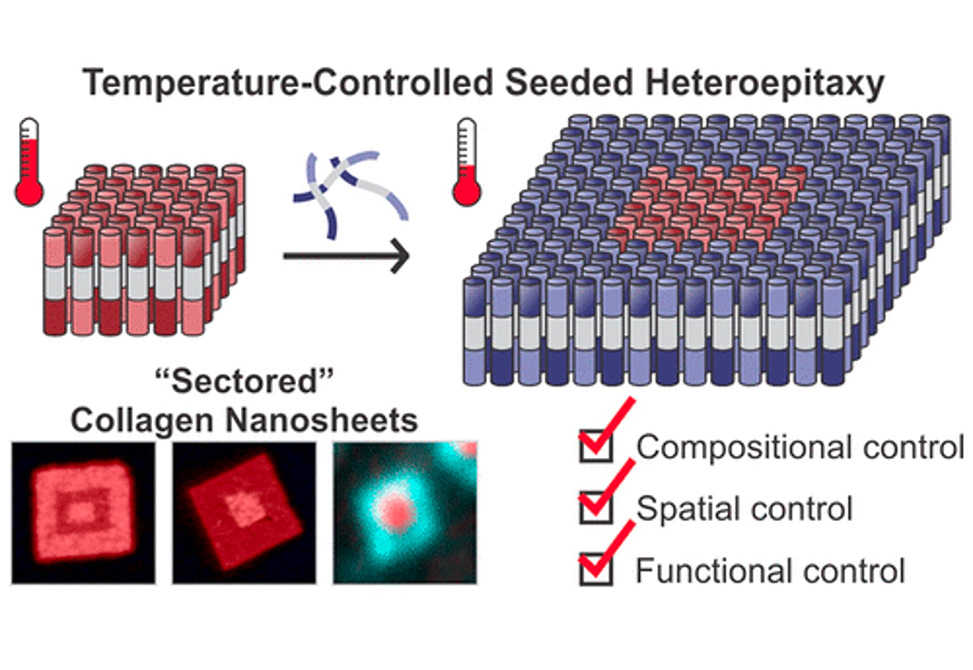Nanosheet Fabrication
Reflecting work in the
Engineering free-standing 2D nanomaterials with compositional, spatial, and functional control across size regimes from the nano- to mesoscale represents a significant challenge.
Collaborative work published in JACS, demonstrates a straightforward strategy for thermodynamically controlled fabrication of multicomponent sectored nanosheets in which each sector can be chemically and spatially addressed independently and orthogonally. Collagen triple helices, comprising collagen-mimetic peptides (CMPs), are employed as molecularly programmable crystallizable units. Structural information, gathered from SAXS and cryo-TEM, reveals that the distinct peptide domains maintain their Kinetic studies with a series of collagen model peptides showed that a local hydrophobic environment accelerates cis–trans isomerization to an extent that thermally induced unfolding and folding of the collagen triple helix take place at the same speed.
Structural information, gathered from SAXS and cryo-TEM, reveals that the distinct peptide domains maintain their intrinsic lattice structure and illuminates various mechanisms employed by CMP triple helices to alleviate the elastic strain associated with the interfacial lattice mismatch. They also demonstrate that different sectors of the sheet surface can be selectively functionalized using bioorthogonal conjugation chemistry.


